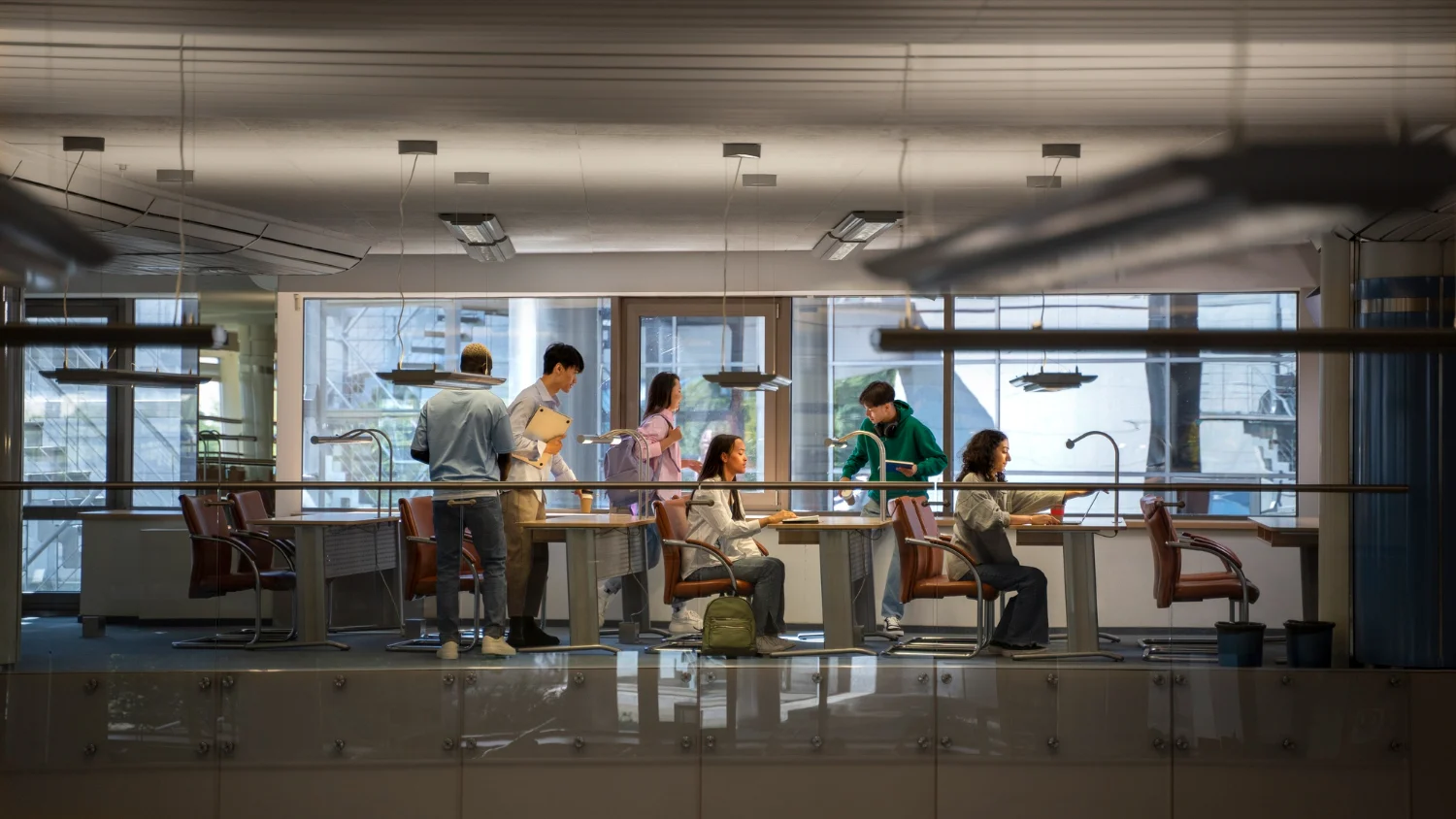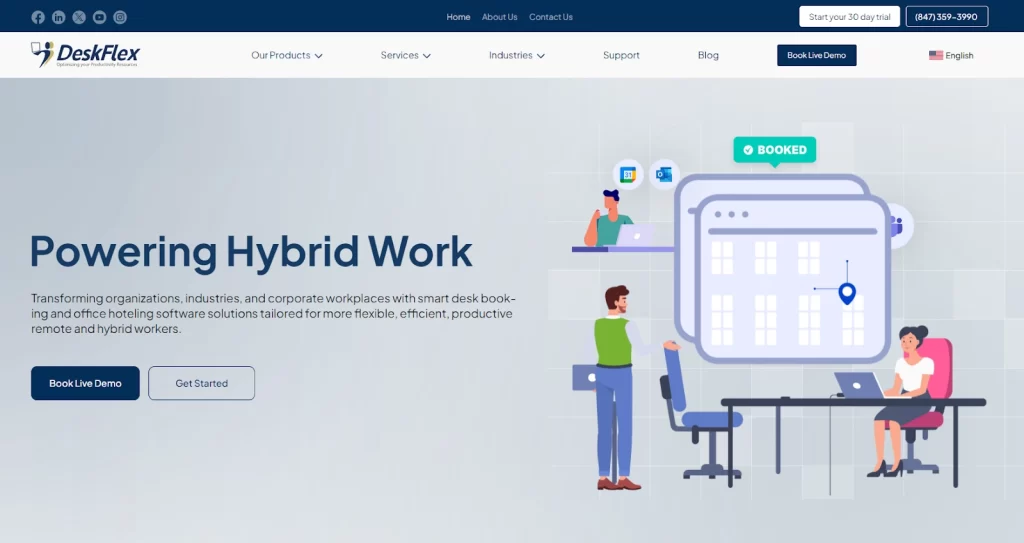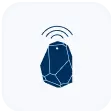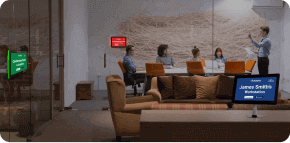
What is an Agile Work Environment 2025
The agile work environment has become a popular model for companies looking to improve flexibility and collaboration.
This type of work setup emphasizes adaptability, teamwork, and continuous improvement, all while reducing the traditional barriers of office space.
But what exactly is an agile work environment, and how does it differ from the traditional office setup?
In this article, we will explore the key features of an agile workplace environment, its benefits, and how it differs from the traditional office setup.
What is an Agile Environment?
An agile work environment is a workplace designed to support an agile way of working. It prioritizes flexibility and collaboration, enabling employees to move between different spaces depending on the nature of their tasks.
These environments often include:
- Open collaboration areas: For group discussions, brainstorming sessions, and team meetings.
- Quiet zones: Where employees can focus on tasks requiring concentration and quiet spaces.
- Breakout spaces: For informal meetings, quick stand-up discussions, or casual interactions.
- Touchdown spaces: Where employees can work temporarily between meetings or when they need quick access to a workspace.
The goal of an agile work environment is to enable teams to work together more fluidly, respond to change more effectively, and make decisions faster.
Key Elements of an Agile Work Environment
An agile work environment is much more than just a physical space; it represents a philosophy that focuses on flexibility, collaboration, and productivity.
It incorporates several essential elements that help promote efficient work processes while meeting the needs of modern businesses and employees alike.
Flexible Office Layout
One of the defining features of an agile office is its flexible layout. Unlike traditional office spaces with fixed desks and cubicles, agile environments use adaptable furniture and multifunctional areas.
This includes movable desks, adjustable workstations, standing desks, and breakout spaces where teams can collaborate freely.
The flexibility of agile workspaces allows businesses to use their physical space more efficiently and adapt to changing needs.
Agile Office Design
An agile office design encourages collaboration and promotes a creative atmosphere for agile teams.
This can be done by incorporating open-plan layouts that foster interaction while still offering quiet zones for concentrated work or project management.
Breakout spaces serve as areas where teams can meet for quick brainstorming sessions or impromptu discussions great for agile working.
This not only improves space utilization but also allows for a more dynamic, engaging environment for employees implementing agile practices.
Collaborative Workspaces
Collaboration is a key aspect of any agile environment. Agile workplaces provide dedicated collaborative spaces where teams can work together on projects, share ideas, and engage in productive discussions.
These spaces are typically equipped with project management tools such as Kanban boards or software that enables teams to track progress, assign tasks, and manage workflows.
Why Agile Environments Are Important in Today’s Workplace
Agile work environments are important in today’s workplaces for several reasons:
- Adaptability: As the nature of work continues to evolve, businesses need environments that can adapt to changes in team structures, project requirements, and technological advancements. Agile workspaces allow businesses to adjust their office space based on immediate needs without significant disruptions.
- Encourages collaboration: Agile workplaces tend to foster collaboration among team members by providing flexible spaces for group work. This helps employees communicate more effectively, share ideas, and solve problems together for an agile mindset.
- Supports a flexible workforce: With the rise of remote and hybrid working models, agile work environments allow employees to transition smoothly between different locations, such as working from home and the office. Employees benefit from having both dedicated workspaces and shared spaces that meet various work styles and needs.
- Improved employee satisfaction: Offering employees the freedom to choose where and how they work can lead to higher job satisfaction and retention. Agile workplaces cater to the diverse needs of employees, providing spaces for focus, collaboration, and relaxation.
Agile Workspace vs. Traditional Office Environment
A traditional office space often consists of fixed desks, rigid layouts, and hierarchical seating arrangements. Employees are usually assigned a specific desk or office and are expected to perform all their tasks from this designated space.
Traditional offices emphasize stability and routine, with limited flexibility in how the space is used.
In contrast, an agile approach breaks away from these constraints by offering maximum flexibility in how employees utilize office spaces.
Agile environments promote movement, adaptability, and quick changes to office layouts as projects and teams evolve.
The core differences between traditional and agile environments include:
Traditional Office Environment | Agile Work Environment |
Fixed desks and assigned seating | Flexible seating and unassigned desks |
Static office layouts | Dynamic spaces that adapt to project needs |
Hierarchical office structure | Flat, collaborative team-based structure |
Minimal opportunities for spontaneous collaboration | Spaces that encourage spontaneous interaction and brainstorming |
This adaptability and fluid approach in agile environments leads to higher employee productivity and better space utilization compared to traditional office settings.
Optimize Your Work Environment With DeskFlex

DeskFlex offers an all-in-one solution for businesses looking to manage their agile workspaces efficiently while fostering productivity and team collaboration.
Here’s a closer look at its key features:
Real-Time Workspace Booking
Agile teams need flexibility when it comes to their workspaces. DeskFlex allows team members to easily book workstations, meeting rooms, and other office resources in real time.
This feature ensures that employees can move freely between spaces based on the needs of their tasks without worrying about conflicts or unavailable spaces.
Integration with Agile Project Management Tools
DeskFlex seamlessly integrates with popular project management tools like Microsoft Outlook, Zapier, and Office 365, making it easier for agile teams to coordinate project schedules and manage workflows.
This integration means that teams can synchronize workspace reservations with their project timelines and task management, ensuring that workspace availability aligns with agile sprints or other project deadlines.
Improved Space Utilization and Resource Management
DeskFlex helps businesses monitor how their physical spaces are being used, providing insights into desk occupancy and meeting room usage.
This data allows businesses to make informed decisions about space allocation, ensuring they use their office spaces efficiently.
The reporting features allow managers to track trends in space utilization, helping them adjust layouts or seating arrangements based on real-time data.
Flexibility for Hybrid and Remote Teams
As hybrid work models become more common, DeskFlex provides the flexibility to manage remote and in-office employees efficiently.
With DeskFlex, employees working remotely can check workspace availability before coming into the office.
This ensures that all team members, whether remote or in-office, have access to the spaces they need for collaborative or focused work.
Simple and User-Friendly Interface
DeskFlex is designed with simplicity in mind, ensuring that all team members can easily navigate the platform to book spaces, schedule meetings, and manage resources.
The intuitive interface reduces the need for training and streamlines the process of managing workspaces, making it easier for employees to focus on their core tasks.
Schedule a demo today and see how DeskFlex can transform your office into a more flexible, productive, and employee-friendly space!
FAQs About Agile Work Environment
What is an agile work environment?
Working in an agile environment means being part of a flexible and adaptable workplace where collaboration and continuous improvement are prioritized.
Employees in such environments are encouraged to work in different spaces depending on their tasks, such as collaboration areas for brainstorming or quiet zones for focused work.
What is an example of an agile environment?
An agile environment often features a flexible office layout with open collaboration areas, quiet zones, breakout spaces, and touchdown spaces.
For example, in a software development company, teams may use Kanban boards, an agile methodology, in a shared project area to track their progress while also having access to quiet zones for focused coding work.
What does agile working mean in the workplace?
Agile working in the workplace refers to a flexible approach to how employees work, allowing them to choose where, when, and how they work most effectively.
It emphasizes adaptability, team collaboration, and the use of tools to track project progress and allocate tasks efficiently.
Agile working environments also focus on providing spaces that support different work styles, such as quiet zones for focus or breakout spaces for teamwork, while aligning with agile project management principles like sprints and continuous improvement.
What is an example of being agile at work?
An example of being agile at work is when a team holds a daily stand-up meeting to quickly discuss their tasks, progress, and any obstacles they are facing.
After the meeting, team members might move to different areas of the office—some to quiet zones for individual tasks and others to collaboration spaces for group work.















































 Support
Support  Demo
Demo  Blog
Blog 